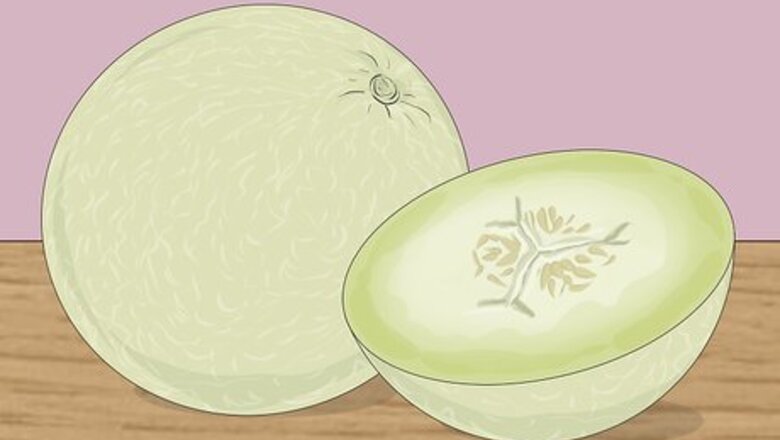
views
Looking at the Melons
Purchase honeydew melons from summer to fall for the best taste. Although honeydew melons can be eaten any time of the year, they are freshest from the middle of the year right up to winter. Either head to the supermarket or harvest from your crop during this time. If you live in the U.S., the growing and harvesting season for honeydew melons is June to October. Always harvest honeydew melons 3 months after planting them.
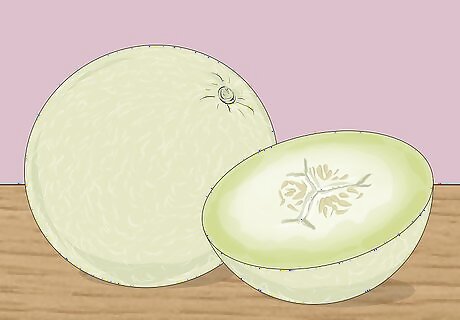
Look for a round, symmetrical honeydew melon. Ripe and mature melons should look smooth and round. Avoid melons with strange bumps and lumps as these are signs that they haven't properly matured. Most honeydew melons should have a slightly oval shape.
Select whitish-yellow honeydew melons with a golden hue. The yellower the melon, the riper it is. If it has brown spots, don't worry—these are the areas where the fruit is sweetest, so don't avoid the melon if it has a few. Avoid melons that have green spots or veins running across the outer skin. Don't pick honeydew melons before they turn yellow or they will never ripen. Choose melons with small brown freckles on the outer skin for extra sweetness.
Feeling Honeydews
Press the blossom end of the melon to test for softness. This is the end opposite the end that the stem grows from. Gently press down on it with your finger—it should yield a bit and then return to its original form. If the ends don't give at all, the melon isn't ripe. Look for a "give" that's not too soft and not too hard. Check that the stem end has a subtle dip right where the stem used to be. In addition, make sure any remaining pieces of the stem are dry, hardened, and free from mold.
Run your fingers along the outer skin and check for ridges. If you can feel fine ridges on the melon's outer skin, it's probably perfectly ripened. But if the outer skin is smooth, it's less ripe. The outer skin should have a waxy feel.
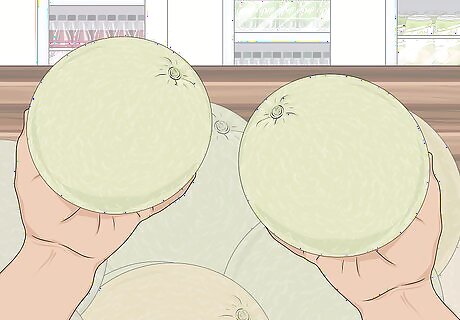
Find the heaviest melon with the most juice. If the melon feels almost too heavy for its size, it's a sign that it has lots of juice. Start by holding 2 potential melons in your hand and choose the heaviest one. Continue doing this until you've narrowed it down to the heaviest melon. Weight the melons with a produce scale if you want the highest degree of accuracy.
Smelling and Listening to the Melons
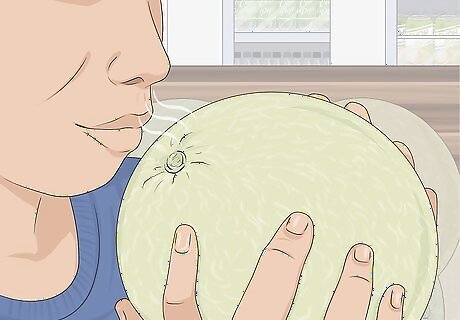
Smell the honeydew melons for a sweet scent. The riper the melon, the stronger its sweet fragrance. Separate the melons based on how sweet they smell and choose the one that smells ready to eat. If you smell a strange odor that smells off, discard the melon.
Tap the melon and check for a hollow sound. Use your knuckles to lightly knock on the melon and listen to the sound it makes. If the melon sounds hollow, it's ripe. Knock on all of the ripe looking melons and separate the ones that sound hollow.
Shake the honeydew melon and listen for seeds. Grab potential melons, hold them to your ear, and shake them side to side. If you hear seeds moving around, the melon is ripe. Use the seed test to choose between melons that were fairly equal on other tests.
Storing and Eating Honeydew
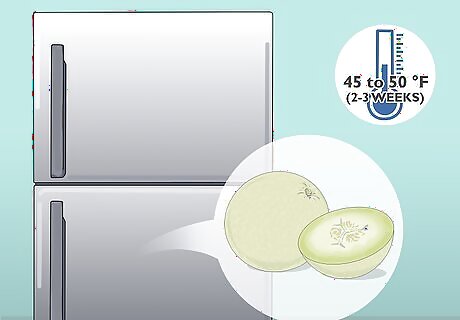
Store your ripe honeydew melon in the refrigerator for 2 to 3 weeks. Honeydew melons that are uncut can be stored for 2 to 3 weeks at 45 to 50 °F (7 to 10 °C). Either place them in your refrigerator uncovered or wrap them in cling wrap. Skip the refrigerator if you have a cool location in your home that's 45 to 50 °F (7 to 10 °C) where you can store your melon.
Cut your melon and serve it. Honeydew melon tastes best when you cut it immediately prior to serving. Pair it with slices of banana, your favorite berries, some green salad, cantaloupe, watermelon, or some low-fat yogurt. Wrap your honeydew melon in some prosciutto if you like some meat with your fruit. Mix your melon with finely chopped red onion, some fresh cilantro, and a squeeze of lime juice to make a nice salsa that goes great with seafood.
Store your cut honeydew melon in the refrigerator for up to 3 days. Wrap uncut parts tightly in cling wrap and put them back in the refrigerator. After 3 days, discard any leftovers. Leave the seeds in all your uncut pieces to prevent them from over-ripening.




















Comments
0 comment